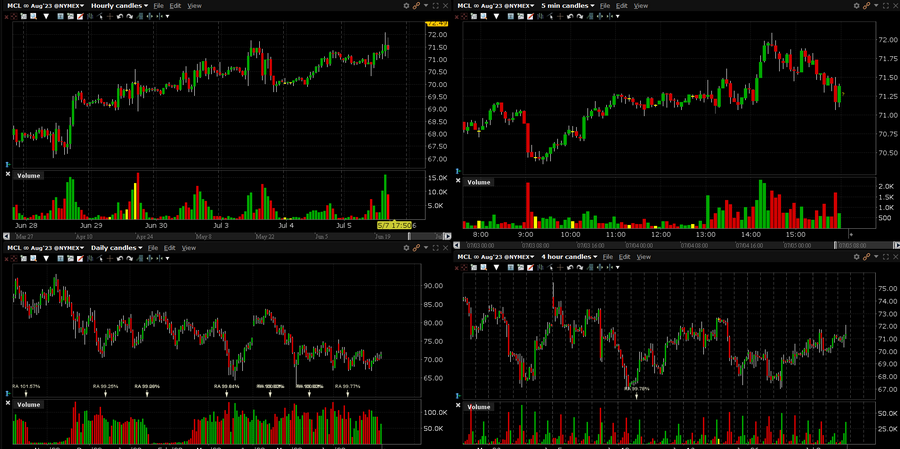Why OPEC+ supply cuts do not lead to higher oil prices? The end of the oil bull market?

OPEC+, a group made up of the Organization of the Petroleum Exporting Countries and allies including Russia, which produces about 40% of the world's oil, has been cutting oil production since November amid falling prices.
Saudi Arabia and Russia, the world's biggest oil exporters, stepped up cuts in oil supplies on Monday to drive up prices. However, the move only lifted the market briefly.
Both cuts come on top of a broader OPEC+ deal to limit supplies until 2024, originally introduced in April, and provide for a total announced production cut of more than five million barrels per day (bpd), or about 5% of global oil production. .
The unexpected April announcement deepened the production cuts introduced in November and helped lift prices by about $9/bbl to above $87/bbl in the following days.
But benchmark oil prices have since lost that gain, with CL oil futures trading just below $72 a barrel on Tuesday.

Additional cuts, analysts at Eurasia Group said, "will do little to change the bearish mood in a market that is gripped by pessimism about the prospects for growth in oil demand in the second half of the year."
Here are the main reasons why OPEC+ production cuts do not lead to a significant increase in oil prices:
THE RISK OF WEAK DEMAND
Data out of China has raised concerns that the economic recovery from coronavirus lockdowns in the world's second-biggest oil consumer is on the wane.
"China's economic recovery after the coronavirus lockdown was lifted was noticeably slower than expected, even as China's oil demand data proved to be reliable," Commerzbank analyst Carsten Fritsch said.
He said the surge in Chinese oil demand was largely a catch-up effect from last year's fall, and that that growth momentum was likely to slow significantly.
INCREASED INTEREST RATES
Worries are heightened as leading central banks, including the US Federal Reserve, are warning that more interest rate hikes may be on the horizon to combat stubbornly high inflation.
Higher interest rates reduce consumers' disposable income and could lead to lower driving and travel costs, limiting demand for oil.
They are also driving up costs for producers, and evidence suggests that growth is slowing in this sector.
“No more beating around the bush, factories around the world are struggling as the sector contracted in Japan, the euro area, the UK and the US and slowed down in China last month,” PVM analyst Tamas Varga said.
All this means that investors do not believe that oil demand will rise sharply in the second half of 2023.
Doubts are raised, in particular, by forecasts that, in order to meet demand, it will be necessary to withdraw significant volumes of oil from storage facilities.
“As the International Energy Agency and OPEC continue to project consumption around 2 million barrels per day…the credibility of these projections is declining over time, and markets will need some persuasion for a meaningful correction to occur,” Eurasia said in a statement.
US PRODUCTION IS GROWING
Faster-than-expected US production growth also contributed to market pessimism about higher oil prices.
The Energy Information Administration forecasts that US crude oil production will rise by 720,000 bpd to 12.61 million bpd this year, higher than the previous forecast for an increase of 640,000 bpd.
This compares to about 10 million bpd back in 2018.
END OF BULL MARKET
In 2020, Saudi Energy Minister Prince Abdulaziz bin Salman warned traders not to bet big on the oil market, saying those betting on the price of oil would be "gosh".
He reiterated his warning ahead of the June 4 OPEC+ meeting, advising speculators to "be careful," which many market watchers and investors interpreted as a signal that OPEC+ might consider further production cuts to punish those betting on lower prices.
However, investors continue to reduce their long positions.
The latest data shows that the combined long position in WTI and Brent futures fell 66,000 contracts to 231,000, just 48,000 above the March 2020 low "which followed the panicky drop in COVID prices."



















